
Contact me Go to home page Return to main travel page
Indonesia
2017
*
Michael Kluckner
| We spent 3 weeks in October travelling
through a little of Indonesia, which consists of a thousand
islands and about 260 million people, most of whom are Muslim. The
island of Java is home to about 150 million of them, but except
for huge and crazy Jakarta you would never guess it was that
densely populated. There are vast tracts of jungle and rice
fields, making the trip by train across Java quite picturesque. |
 |
| Although there were similarities between Indonesia and Malaysia,
neither is as full-on as India.
Bali is Hindu, less densely populated and as close as I ever have
been to a Garden of Eden. Christine had been there many years ago
and was curious to see whether it still had the magic she
recalled. Bali is very distinctive; touristy, yes, but a
beautifully gentle culture as long as you're not hanging out in
surfie-party areas like Kuta Beach. We flew into Jakarta from Tokyo and spent the first 4 days with friends, Helen and Ken. Ken is a Canadian expat artist who has produced a tremendous body of work in the 29 years they have lived there. Following Ken's "shock and awe tour," we took the train (about 8 hours) to Yogyakarta, the old royal capital, and after 4 days continued by train for another 8 hours to the former Dutch colonial city of Malang. Having by that time decided to hasten our passage to Bali, we caught a flight to Denpassar on the sketchy Wings Abadi airline from Malang, arriving safely and only about 2 hours late. We then spent a week in Ubud, using it as a base to explore part of the island; our travels were constrained by the pending eruption of Mount Agung, the volcano in eastern Bali, which had prompted a no-go zone around that part of the island (Agung finally erupted on November 21 about 3 weeks after we left, stranding thousands of tourists at the Denpassar airport – we continue to be lucky travellers!). A note about money: this is what you get from an ATM... 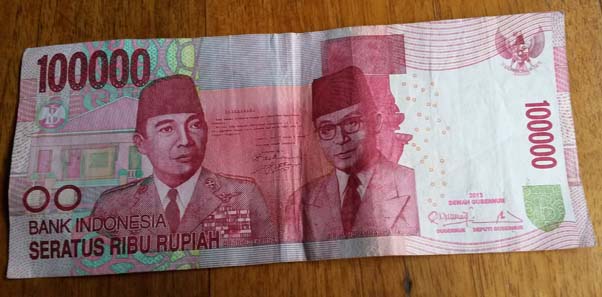 ... and it is worth $10 Australian or Canadian in 2017. Thus, 10,000 rupiah is a dollar. Count your zeros! And the online booking sites in Indonesia only seem to work with Indonesian bank cards, so if you're booking ahead as you travel or want to grab a local airline ticket you may have problems; there is a certification system that involves sending them a photo of the main page of your passport, which you may want to avoid doing. Indomart stores, which are everywhere, have a kiosk that is useful for booking train tickets and making other reservations and payments. Internet data is cheap: a SIM card for 5 GB for a month was about $7. Painting and drawing close to the Equator: I found the combination of saturated colours, especially the greens, with the sun directly overhead and casting no shadows, to be a real challenge as I have developed my painting style based on the angled sunlight typical of countries farther away from the Equator. The light and air in Indonesia seemed oddly heavy, bright but dull, almost shadowless; typically there was at least partial cloud cover. My travel watercolours below of the rice fields look weak to my eye and I probably should repaint them in oils but won't now that we're back; drawing in pencil in a small Moleskine sketchbook was a lot more fun. 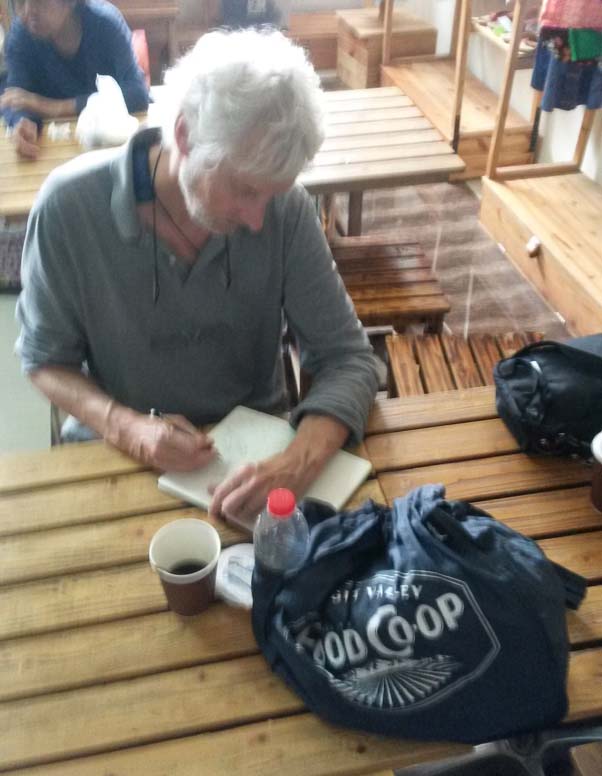 At Malang airport, waiting for Wings Abadi!
At Malang airport, waiting for Wings Abadi!My artwork done on the trip is below and there is a roll of cellphone snapshots (which opens as a pop-up on a computer or a separate window on a tablet or phone) of a number of things spotted along the way that didn't lend themselves to drawing. |
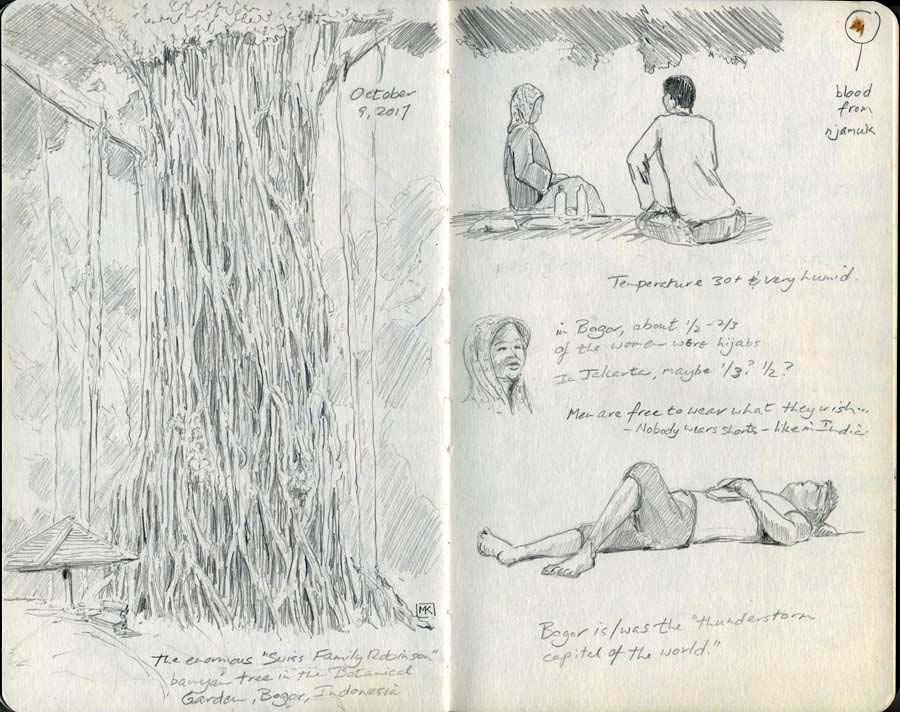
A njamuk is a mosquito. The botanical garden at Bogor is worth a day-trip; there is a photo of a wedding
and of the old Governor's Palace in the cellphone snapshots.
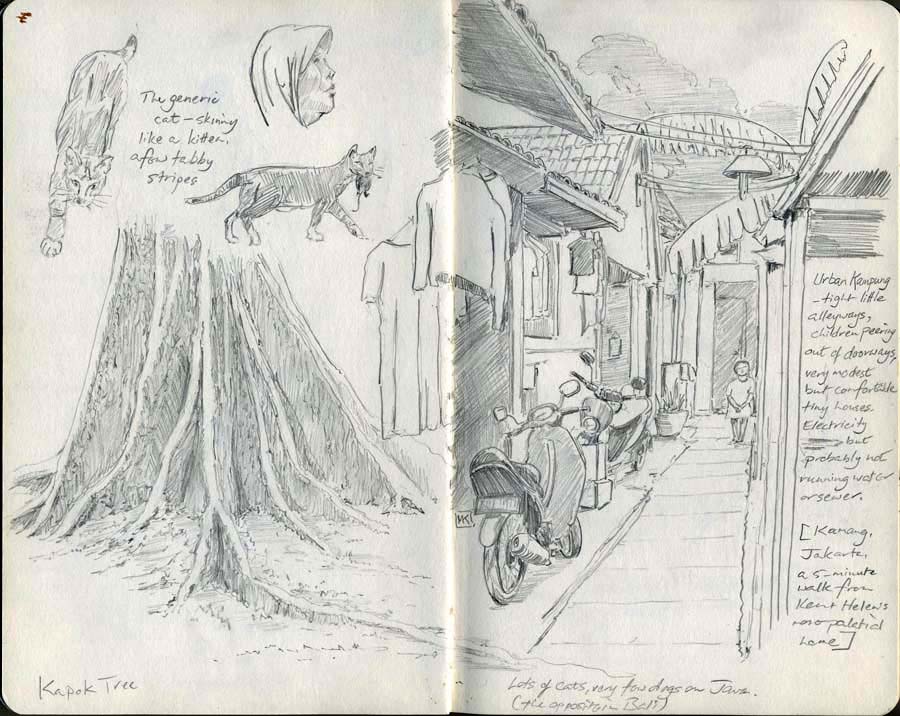
| Like in Morocco, there are many cats in Muslim Java. The kampungs = villages in Jakarata and in other cities are a warren of narrow streets and small buildings, some of them quite middle-class like this one in the wealthy Kamang suburb. |
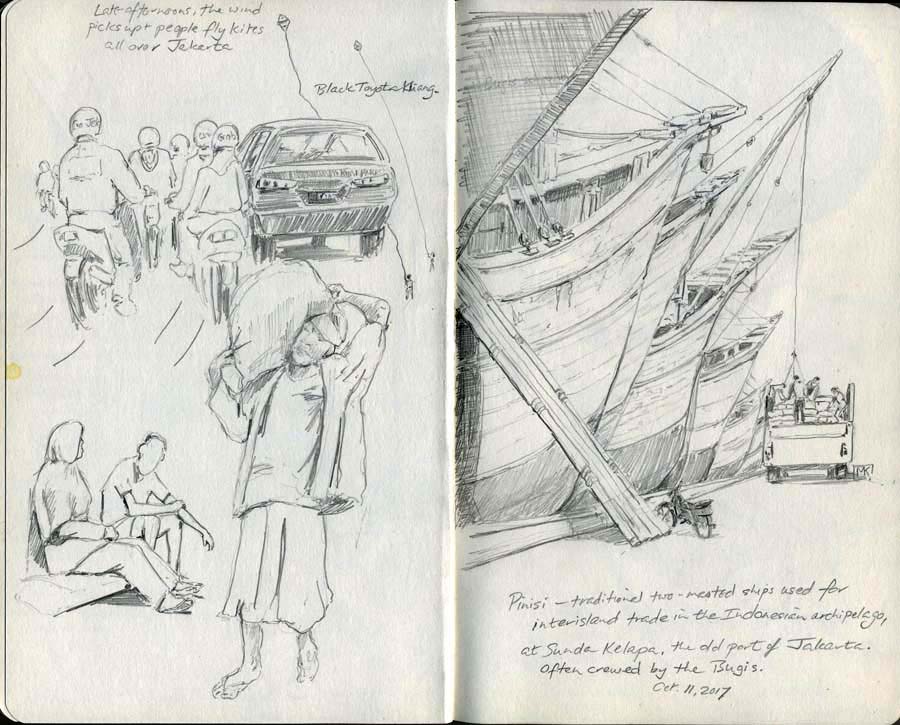
| Motorbikes everywhere! (I put a post
on the PriceTags planning blog about Jakarta traffic and
motorbikes in Indonesia.) And one day we journeyed to Sunda
Kelapa, the old port of Batavia (the Dutch name for Jakarta), to
see the Pinisi – the traditional Indonesian ships that have sailed
throughout the archipelago for generations, and have apparently
only been motorized for the past 40 years or so. |
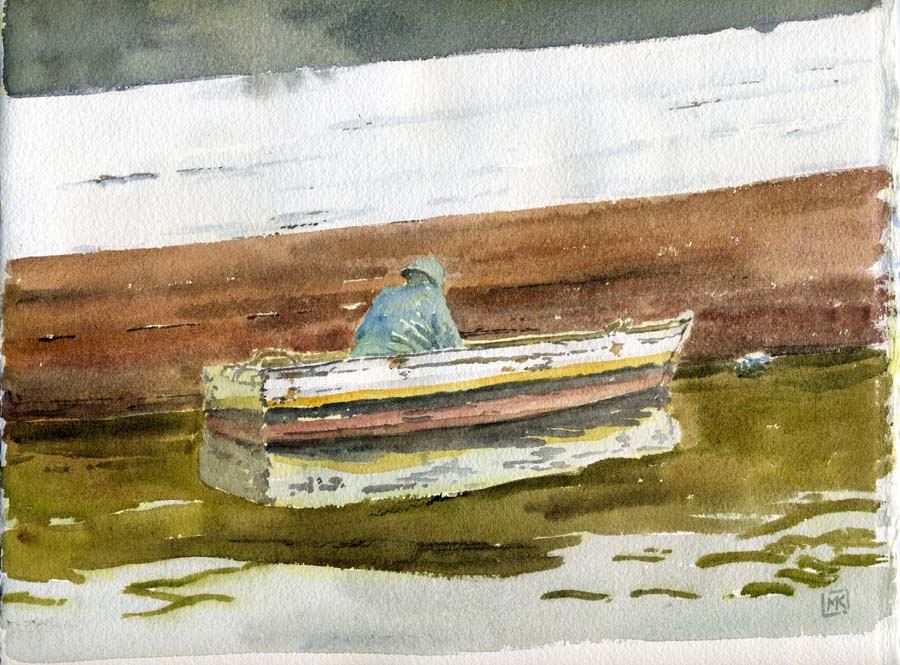
| The murky, oily water at Sunda Kelapa dulled and coloured the
reflections of this man repairing the hull of one of the huge
wooden Pinisi taking on cargo for the inter-island trade. |
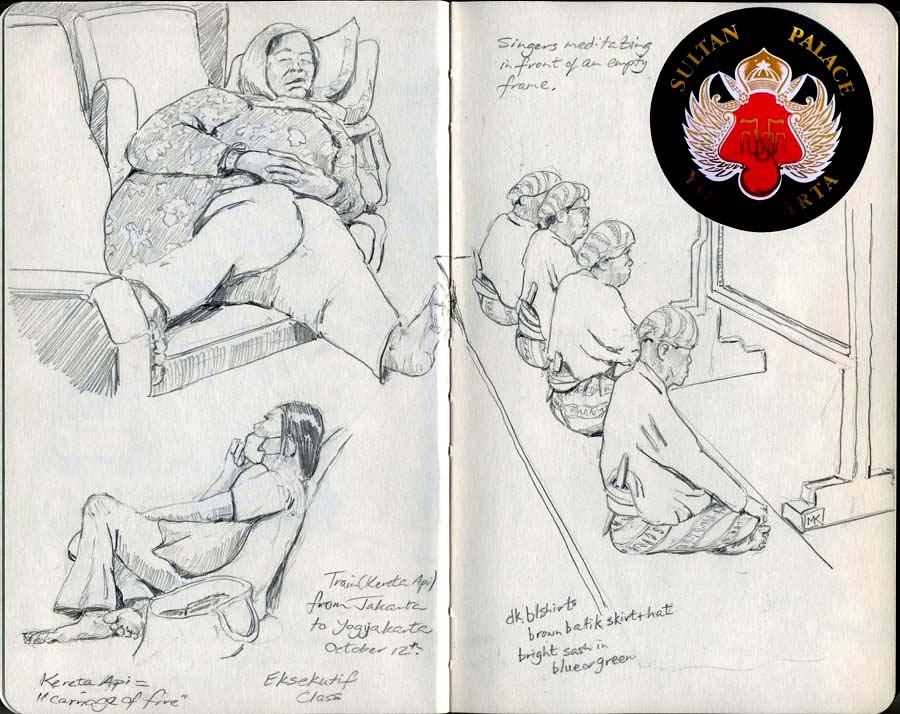
| The Kereta Api, translated as "carriage of fire" a.k.a. the
train, took us to Yogyakarta in Eksekutif Class, which had quite
comfortable seats. At the Sultan's Palace in Yogyakarta, the men
(and one woman), dressed in brown batik skirts and head-covering
with a bright blue-green sash holding a dagger, took turns singing
from a dais in the centre of one building and then would return to
meditate in front of what appeared to be an empty frame. Maybe the
frame had nothing at all to do with their meditations, but I drew
it anyway. |

| Borobudur is the huge Buddhist temple complex near Yogya, a day-trip in itself. Nearby, and from around the same 9th century C.E., is the Hindu complex of Prambanan, a more dramatic site ringed by the ruins of smaller collapsed temples that were victims of a recent earthquake. There are a few photos in the cellphone snapshots file. Both places are essentially mounds (stupas) with little interior space but providing a surface for small narrative bas-reliefs; they are essentially unpaintable compared with, say, a French chateau set in a picturesque landscape. |
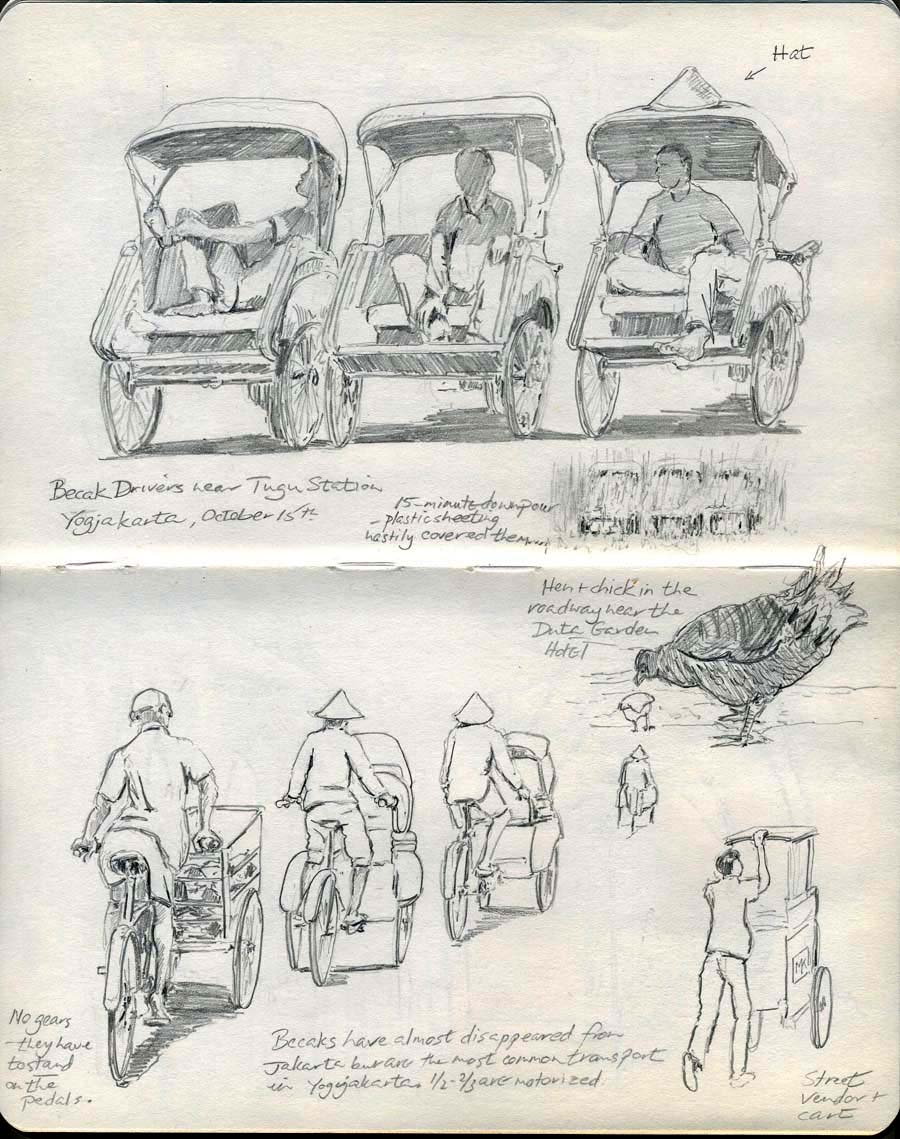
| Becaks (2 wheels in front and one behind) are as common as the
tuk-tuks or auto rickshaws (1 wheel in front and two behind) in
Thailand or India or, indeed, small-town
Peru. They are a generally used form of
transport, both for people and freight, by which I mean that
they're not kept alive just for tourists. About half of them are
motorized. |

| Above: Killing time on the 8-hour train ride to Malang in
Ekonomi class. In Malang, we stayed in a 10-storey hotel, the
tallest building in town, the "101," which had started out as a
Best Western but had been bought by an Asian chain. Very nice but
not really us – it was what we could find on short notice, as we
were booking accommodation as we went along, which we usually do
as we never know in advance how long we want to stay in a place. |

| The kampung I drew in Malang, from the high bridge south of the
old Dutch part of town, was the typical greys and rusty reds of
vintage Indonesian buildings. It adjoined the blue kampung and was
on the other side of the bridge from the rainbow-coloured one in
the cellphone
snapshots file. Right-hand page: as mentioned above, we went
to Bali... |
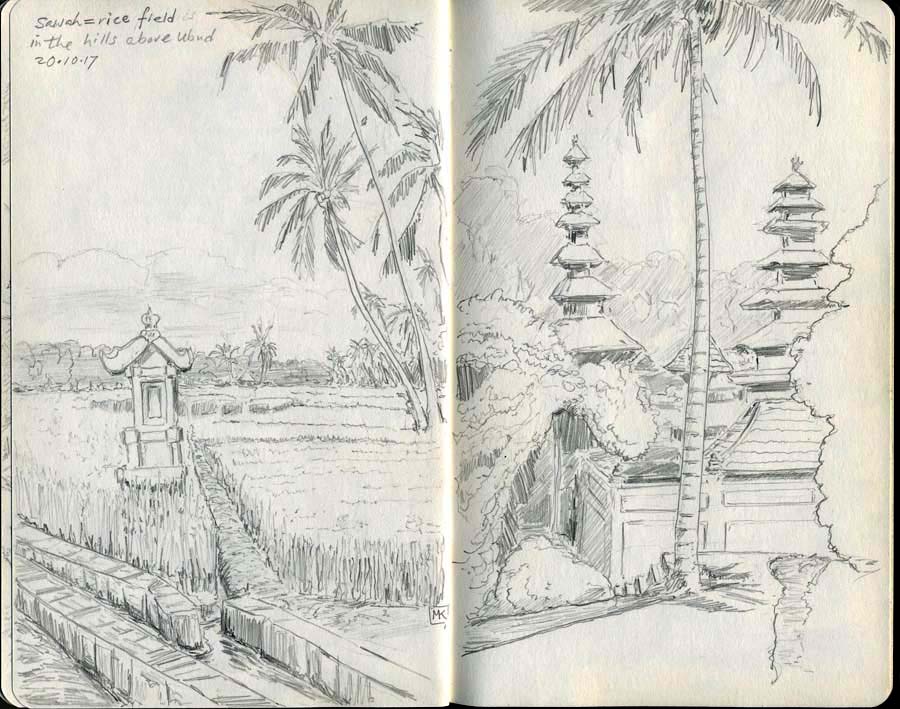
| Think saturated greens – vast rice fields ringed with
palm trees and village buildings. Always there is the sound of
water running through an intricate network of channels to irrigate
the rice. Temples and small shrines to Dewi Sri, the goddess of
rice, dot the landscape. |

| Above Jatiluwah and below Tegalalang, two of the best-known of
the terraced rice-growing areas on Bali. (In these watercolours,
the greens are too yellow, but painting them in the correct green
bleeds the light from the painting, at least in watercolour. Oh
well...) Both of these spots are tourist magnets – they are
beautifully, almost unbelievably, manicured, with the terraces cut
so skilfully into the hillsides. |
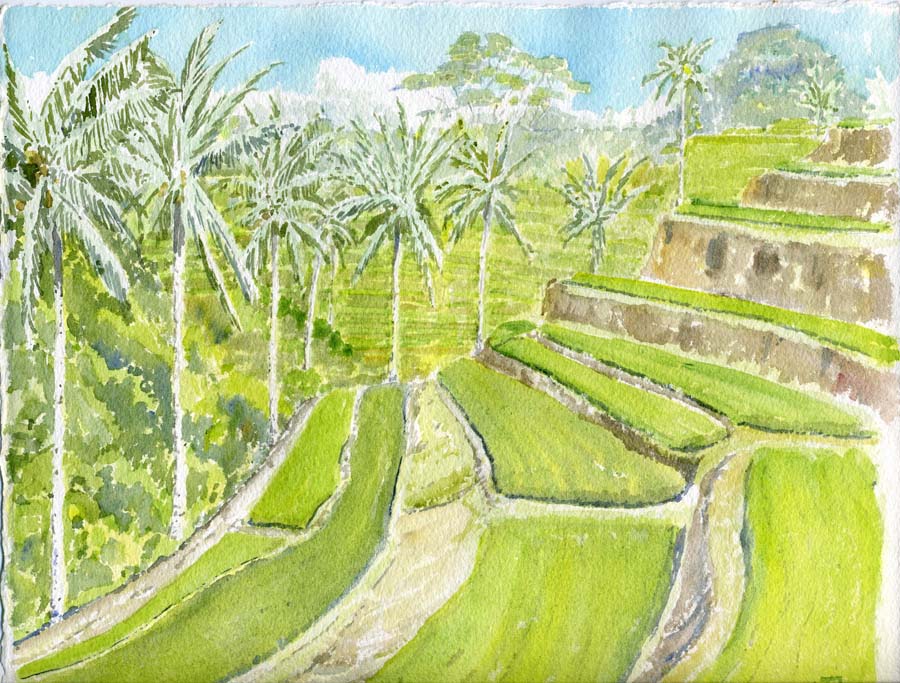
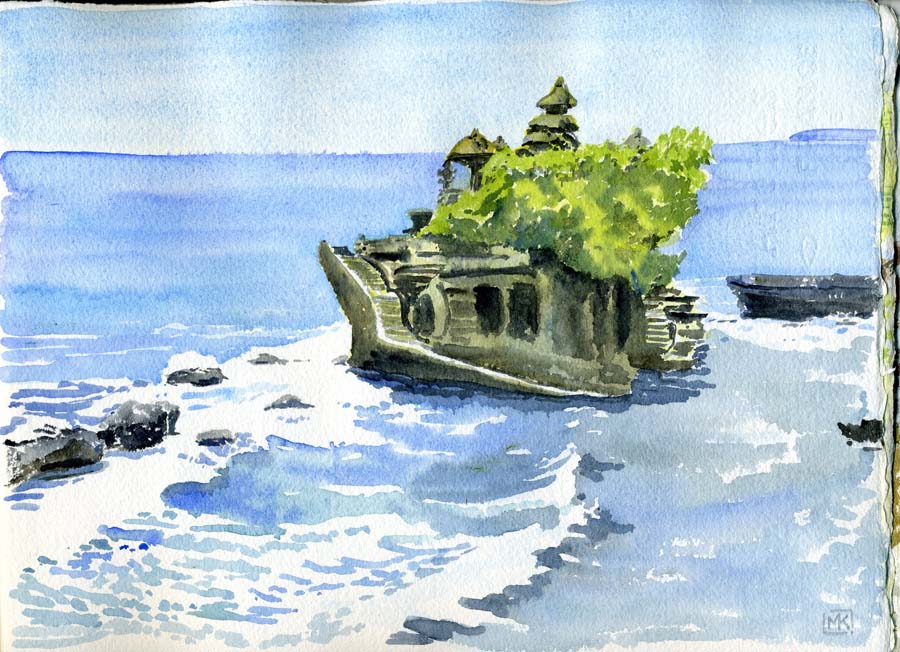
| Tanahlot Temple on the south coast not far from Denpassar –
another magnet for the perfect tourist selfie. Adjoining it is one
of the Trump golf-resort properties. Didn't/couldn't go into it –
not just because of the high tide. It is for the devout only. And
the name had me thinking of "Camelot" sung by Richard Harris for
days after. |
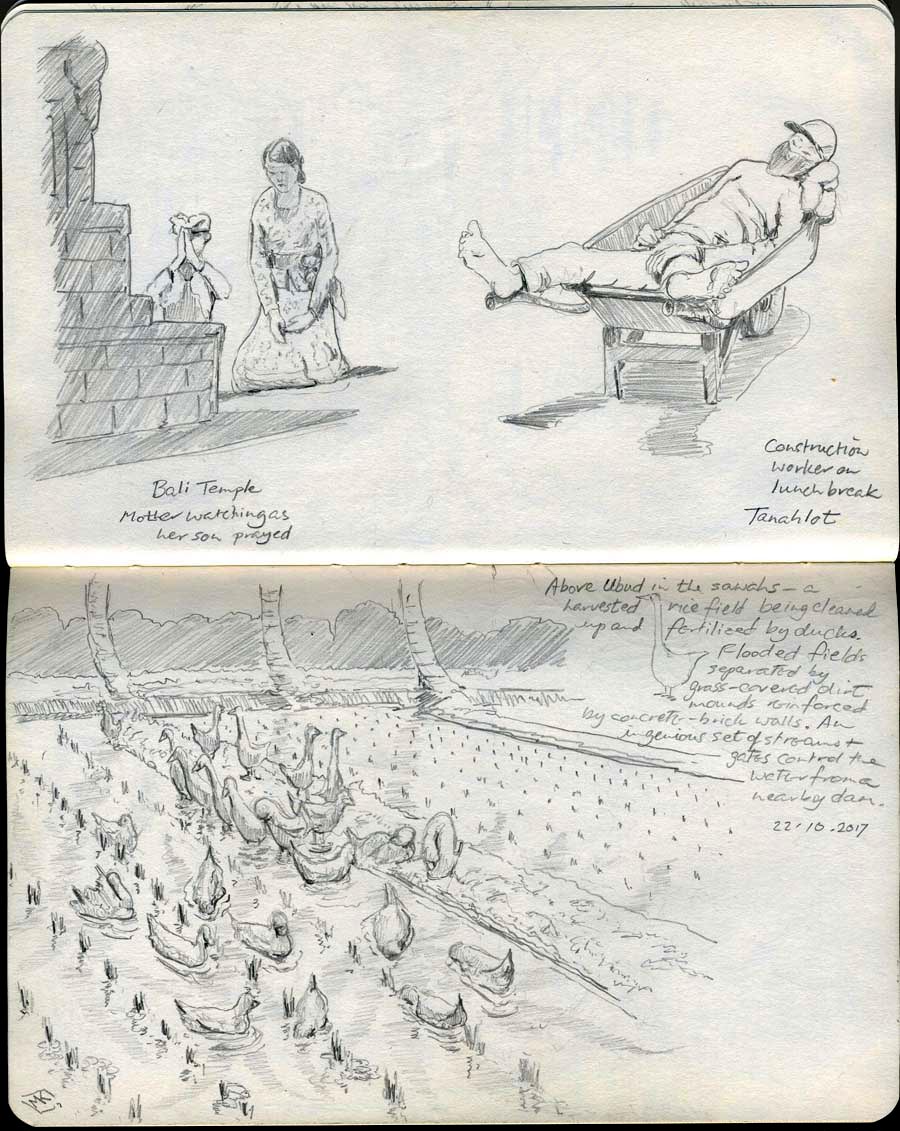
| Much of Bali is, at least on the surface, a paradise: mangoes,
coconuts, bananas and other fruits growing all year long, chickens
with their chicks in tow scratching through the underbrush with no
fear of predators, the sawahs/rice fields irrigated by an
intricate, age-old system of dams and ditches that are run
cooperatively by the villagers (the non-paradise part is
recognizing that growing rice is incredibly labour-intensive, and
hard labour at that), and flocks of ducks eating the weeds and
bugs while fertilizing the fields and then showing up on dinner
tables; then there is the Balinese religious engagement with their
cultural symbols and ceremonies, including the making of artwork,
the clothes and parades, the "auspicious days" ... No wonder so
many people go there in search of spiritual renewal. |
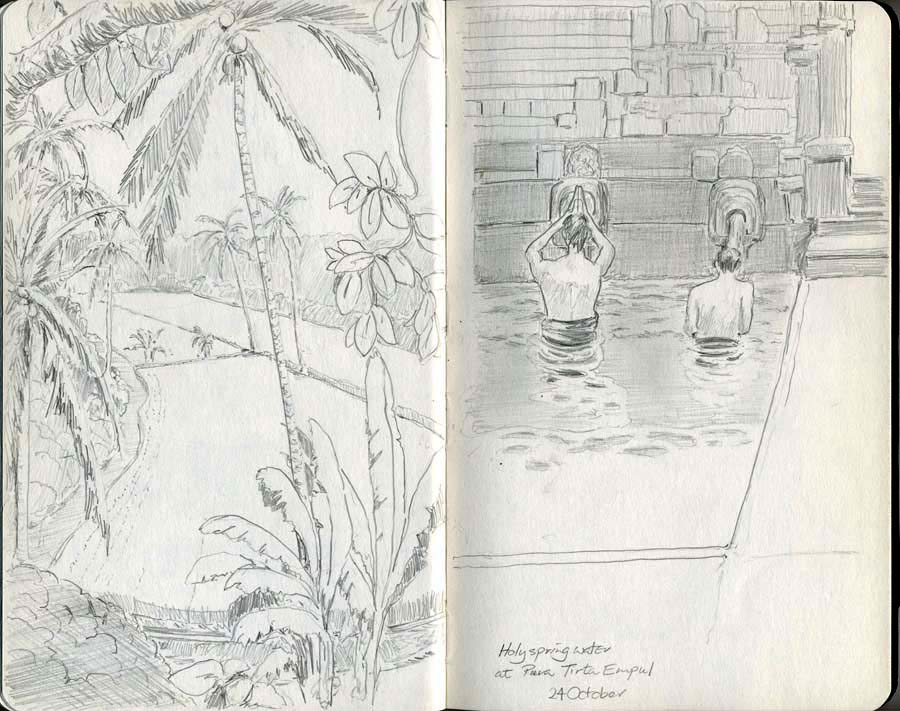
| On the left, think "green" – sawahs/rice fields in the hills
above Ubud. Pura Tirtha Empul is a temple famous as a source of
holy water; devout, tolerant Balinese Hindus share it with
spiritual tourists and clowns intent on getting a good selfie. |

| Above and below: Mount Batur at Kintamani, about 30 km.
northwest of explosive Mount Agung. There were other viewpoints
farther down towards the lake but this one on the edge of the town
had the best view of the lava path and cloud shadows on the
mountain. It is intriguing to see the extent of the damage from
the 1968 eruption, and how the lava flowed around and spared a
small island of trees; we could see some tiny distant evidence of
the recolonization of the lava field with plants. |
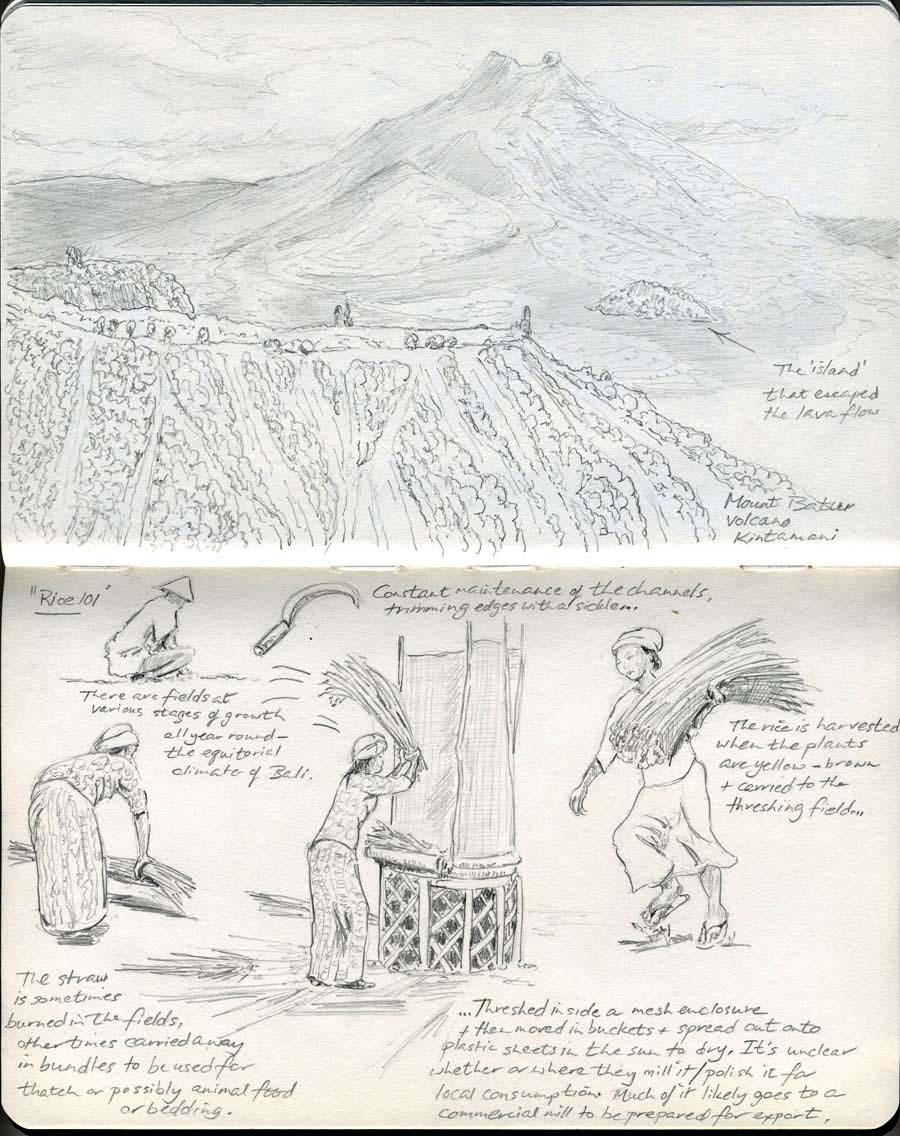
| "Rice 101" – just the planting of it in neat perfect rows would
be backbreaking. There are photos of the rice fields and different
types of rice in the cellphone
snapshots file. |
Contact me Go to home page Return to main travel page
Artwork & text © Michael Kluckner, 2017